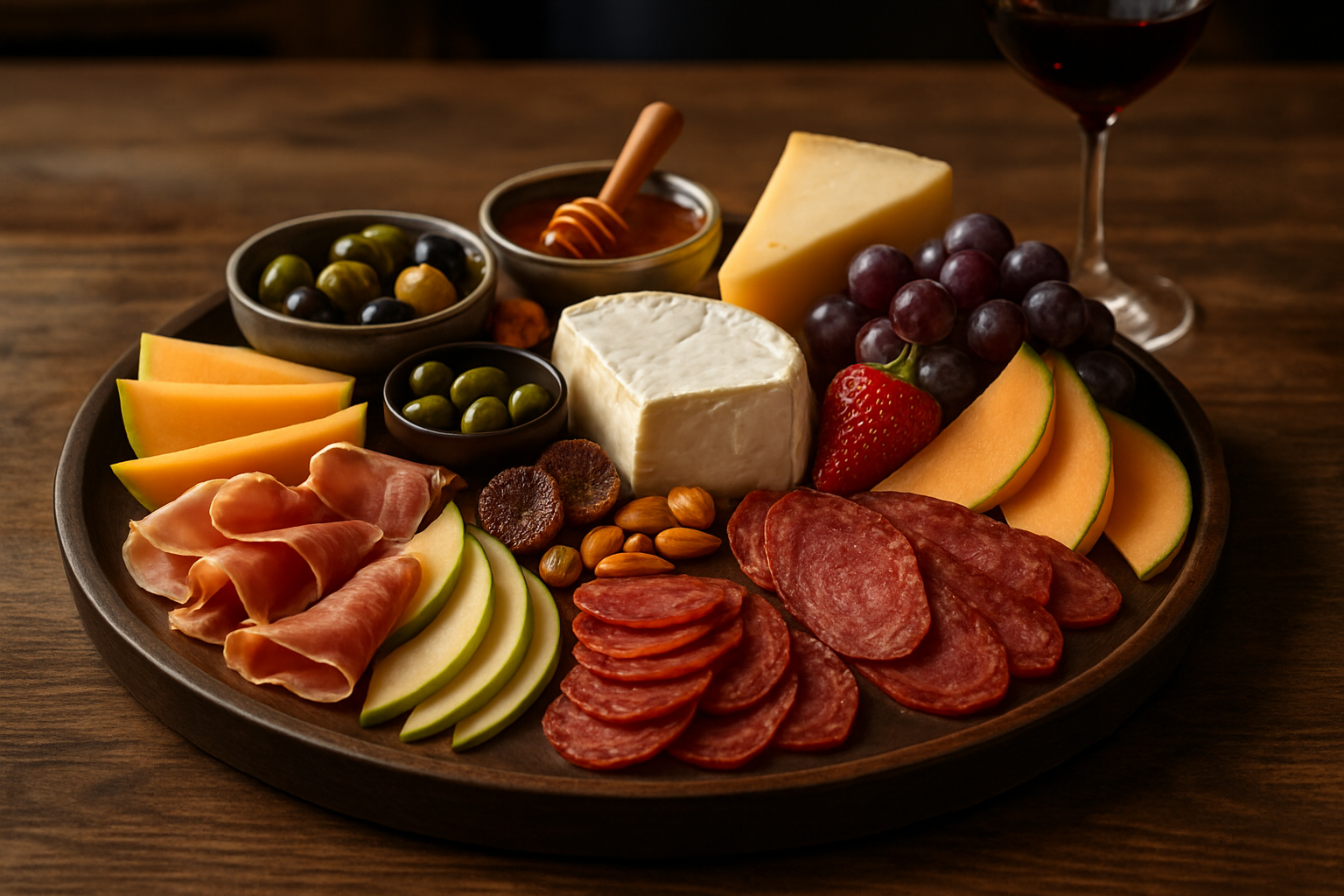Umami-Packed Charcuterie Boards: A Savory Symphony
Elevate your entertaining game with the art of charcuterie. This culinary trend combines exquisite meats, cheeses, and accompaniments to create a feast for the senses. Discover how to curate a board that tantalizes taste buds and sparks conversation.

Selecting Premium Meats
The foundation of any great charcuterie board is a thoughtful selection of high-quality meats. Begin with a variety of textures and flavors, ranging from thinly sliced prosciutto to robust salami. Consider including some unexpected options like duck rillettes or smoked venison to add intrigue. When choosing meats, opt for artisanal producers who prioritize traditional curing methods and quality ingredients. Pay attention to the balance of flavors – include some milder options like mortadella alongside bolder choices such as spicy chorizo. Remember that the meats should complement rather than overpower the other elements on the board. For a well-rounded selection, aim for at least three different types of meat, ensuring a mix of pork, beef, and poultry. Don’t forget to consider vegetarian alternatives like marinated artichokes or roasted red peppers for guests who don’t consume meat.
Curating a Cheese Collection
Cheese is the perfect partner to charcuterie, offering a creamy contrast to the savory meats. When selecting cheeses, aim for a diverse range of flavors, textures, and milk types. Include a soft, bloomy rind cheese like Brie or Camembert, a firm option such as aged cheddar or Gouda, and a bold blue cheese to round out the selection. Consider incorporating a local or artisanal cheese to add a unique touch to your board. Pay attention to the intensity of flavors, ensuring you have mild options to balance out stronger cheeses. Temperature is crucial when serving cheese – remove them from the refrigerator at least an hour before serving to allow the flavors to develop fully. Don’t forget to provide appropriate serving tools for each cheese type, such as a wire cutter for soft cheeses and a sturdy knife for hard varieties.
Crafting Perfect Pairings
The art of charcuterie lies in the harmonious pairing of flavors and textures. Complement your meats and cheeses with a carefully curated selection of accompaniments. Fresh and dried fruits add a touch of sweetness and acidity – think figs, grapes, or dried apricots. Nuts provide a satisfying crunch and can be served raw or roasted for added depth. Olives and pickled vegetables offer a briny contrast that cleanses the palate between bites. Don’t forget about spreads and condiments – a dollop of fig jam, honey, or whole grain mustard can elevate the entire experience. Bread and crackers are essential for building the perfect bite, so offer a variety of options including crusty baguette slices, crisp water crackers, and seeded flatbreads. Remember to consider the visual appeal of your pairings, using a mix of colors and shapes to create an attractive display.
Presentation and Styling
The visual appeal of a charcuterie board is just as important as its taste. Start with a beautiful serving surface – a wooden board, marble slab, or slate tile can provide an elegant backdrop. Arrange your items with an eye for balance and flow, creating clusters of complementary flavors and textures. Use small bowls or ramekins to contain loose items like olives or nuts, adding height and dimension to your display. Incorporate fresh herbs like rosemary or thyme sprigs for a pop of color and aroma. When arranging meats, create appealing folds and rolls to add visual interest. For cheeses, consider pre-cutting some portions to make serving easier while leaving others whole for visual impact. Don’t overcrowd the board – negative space is important for both aesthetics and practicality. Finally, provide appropriate serving utensils and ensure that all items are easily accessible to your guests.
Innovative Twists on Tradition
While classic charcuterie boards are always a hit, don’t be afraid to get creative and put your own spin on this culinary art form. Consider themed boards that showcase regional specialties or focus on a particular cuisine. A Mediterranean-inspired board might feature prosciutto, feta, olives, and sun-dried tomatoes, while a Spanish-themed spread could include Manchego, Serrano ham, and marcona almonds. For a modern twist, incorporate unexpected elements like edible flowers, flavored honeys, or artisanal chocolates. Experiment with different presentation styles, such as individual charcuterie cups for easy serving at larger gatherings. Embrace seasonal ingredients to keep your boards fresh and exciting throughout the year. Don’t forget about dietary restrictions – create sections or separate boards for vegetarian, vegan, or gluten-free options to ensure all your guests can partake in the experience.
Charcuterie Board Pro Tips
-
Always serve meats and cheeses at room temperature for optimal flavor
-
Provide separate utensils for each cheese to prevent flavor mixing
-
Balance flavors by including sweet, salty, tangy, and umami elements
-
Consider wine pairings to complement your board selections
-
Label cheeses and unusual items to help guests navigate the spread
-
Arrange items from mild to strong to guide the tasting experience
-
Incorporate a variety of textures for a more interesting palate experience
-
Don’t forget about vegetarian options like marinated vegetables or plant-based spreads
-
Use edible garnishes like fresh herbs or edible flowers for added visual appeal
-
Provide small plates and napkins for easy grazing
In conclusion, mastering the art of charcuterie board creation is a delightful journey that combines culinary skill with artistic flair. By carefully selecting quality ingredients, balancing flavors and textures, and presenting them with style, you can create a memorable dining experience that delights all the senses. Whether you’re hosting an intimate gathering or a large celebration, a well-crafted charcuterie board is sure to impress and satisfy. So, embrace your creativity, experiment with new combinations, and enjoy the process of bringing people together through the universal language of good food.





